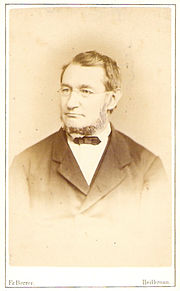Gerard Bilders's Human Design Chart
Design
Design
Personality
Chart Properties
Your Cross represents the specific theme of your life. This cross embodies your unique potential & the lessons you're here to learn, providing a roadmap to fulfilling your life purpose.
We use the UTC birth time and date to do the calculations required to generate your Human Design chart.
Gerard Bilders's Biography
Dutch tragic romantic painter and diary writer, who died at young age of tuberculosis.
He was the son of the later in his life very succesfull tragic romantic painter Johannes Warnardus Bilders (18 August 1811, Utrecht – 29 October 1890, Oosterbeek) and Frederica Staudenmayer (1812, Stuttgart – 1 March 1861).
His father gave him his first painting lessons, but he was not able to support his further education. His fathers friend, Johannes Kneppelhout (8 January 1814, Leiden – 8 November 1885, Oosterbeek), a Dutch writer, using the pseudonym “Klikspaan” (the squeaker) became his Maecenas and financial benefactor, who sent him to the Drawing school and Art Academy in Den Haag (1857) and also to Geneva to study under the Swiss animal painter Charles Humbert (1813-1881).
In 1859 he had a studio in Amsterdam, but soon he had financial and health trouble (tuberculosis at age 23), when the grants of Kneppelhout had stopped and he was not able to sell his paintings for a reasonable price.
Together with his father he visited in 1860 in Brussel the painters of the Barbizon. Both were impressed. Painting the total light impression of a landscapes without mannerist attention to details, became also a hallmark of the Hague School, of which they became forerunners.
From age 15 till age 25, a year before his death, he kept a diary and wrote letters about artistic his views and intentions (published 1876 by Kneppelhout), that are now known to have moved and inspired the painter and diary writer Vincent Van Gogh, who lived under similar poor social circumstances:
“Das Leben ist im Grunde doch fatal ernsthaft. En dan steeds die armoede weer: Er komt iets armoedigs in mijn geest. Altijd te moeten opzien tegen iets dat een gulden vijftig kost, maakt mij zo klein dat ik volstrekt alle grotere Ansichten verlies.” Life is tragic, he wrote. Always that poverty, the struggle for just stubborn survival, that not only hampers my financial possibilities, but also troubles my greater views on the world. He wrote it in a mixture of Dutch and German, and complained that the Dutch were not interested in his larger Alp views on the world, he made in Switzerland.
Another citation that characterises his holistic view of Impressionism : “Het is mijn doel niet, een koe te schilderen om de koe, noch een boom om den boom; het is om door het geheel een indruk te weeg te brengen, dien de natuur somtijds maakt, een grootschen, schoonen indruk” could translate as: It not my aim to to paint a singular cow for the sake of the cow, nor a singular tree for sake of the tree. My aim is to display the whole impression that nature sometimes makes on me, a great and beautiful sight. But he admitted, that he had failed in it. He dreamed to go to Paris and meet the impressionists, but poverty and disease prevented him from doing this.
He died at young age in Amsterdam (8 March 1865 7h30 PM) of tuberculosis, after his mother earlier had died of this disease.
Link to Wikipedia
Your Cross represents the specific theme of your life. This cross embodies your unique potential & the lessons you're here to learn, providing a roadmap to fulfilling your life purpose.
We use the UTC birth time and date to do the calculations required to generate your Human Design chart.







